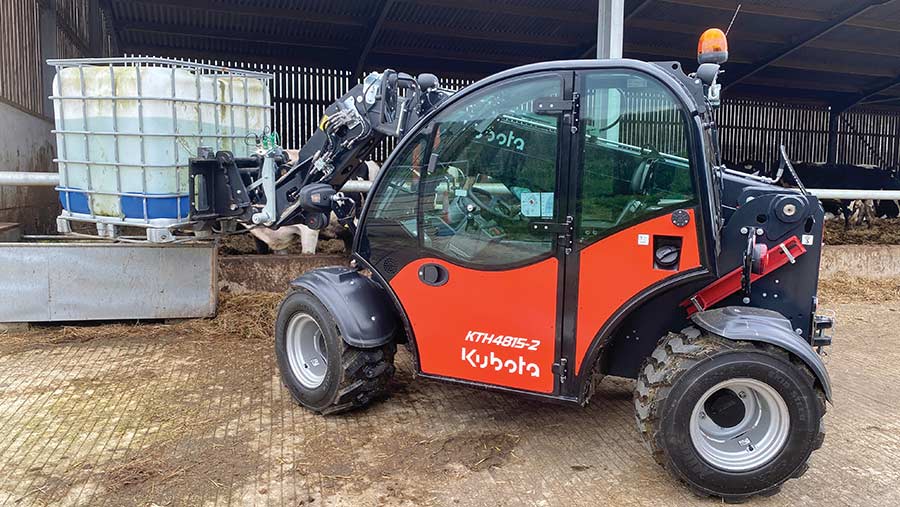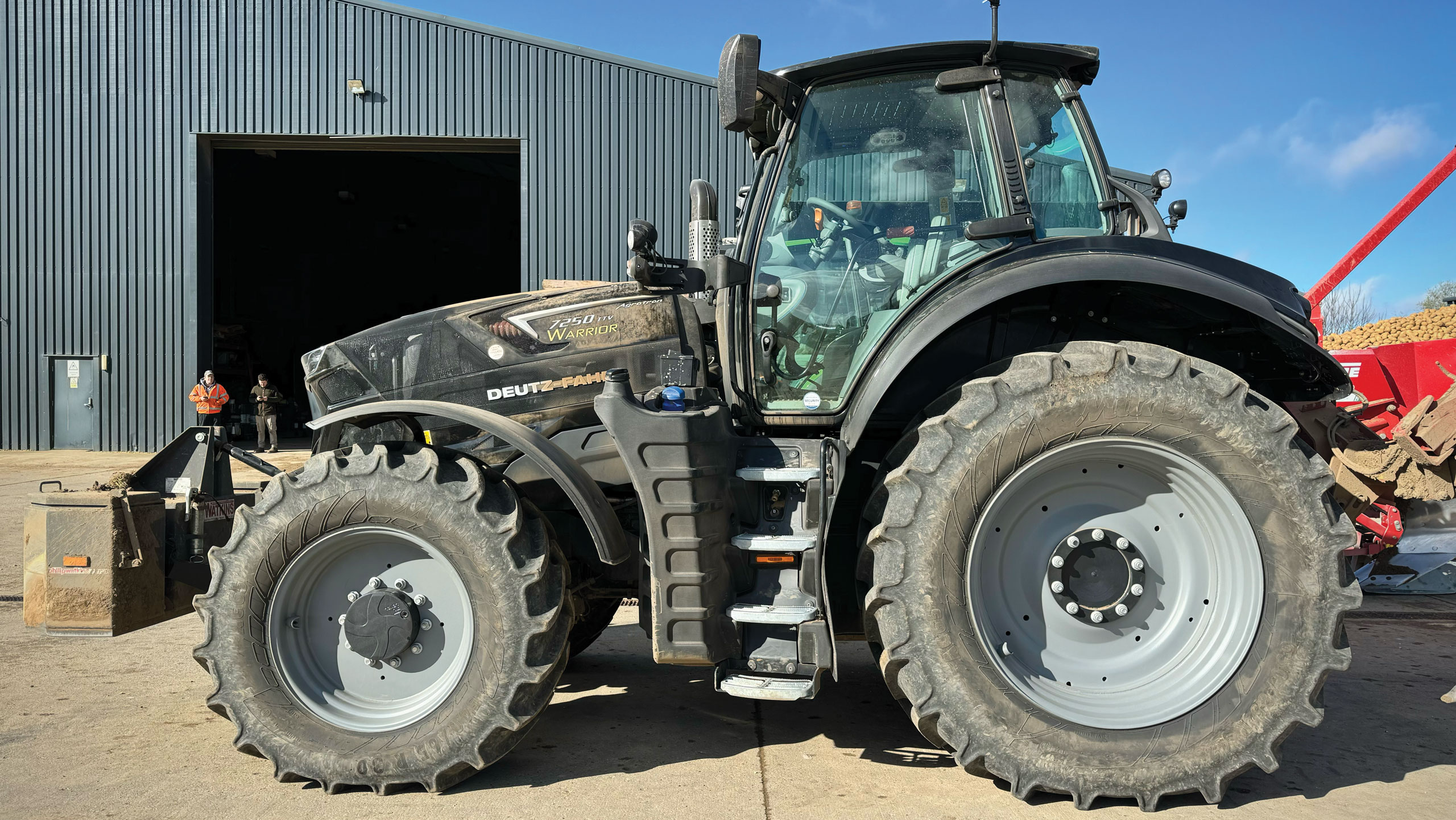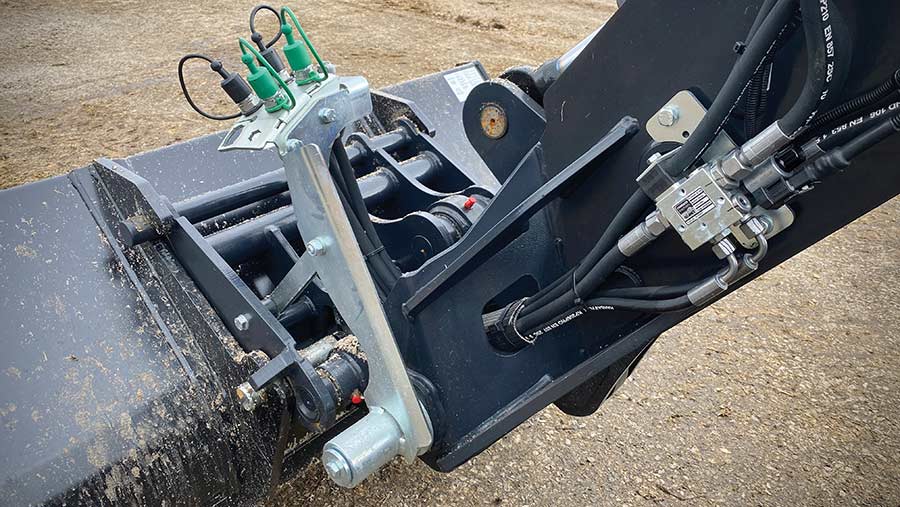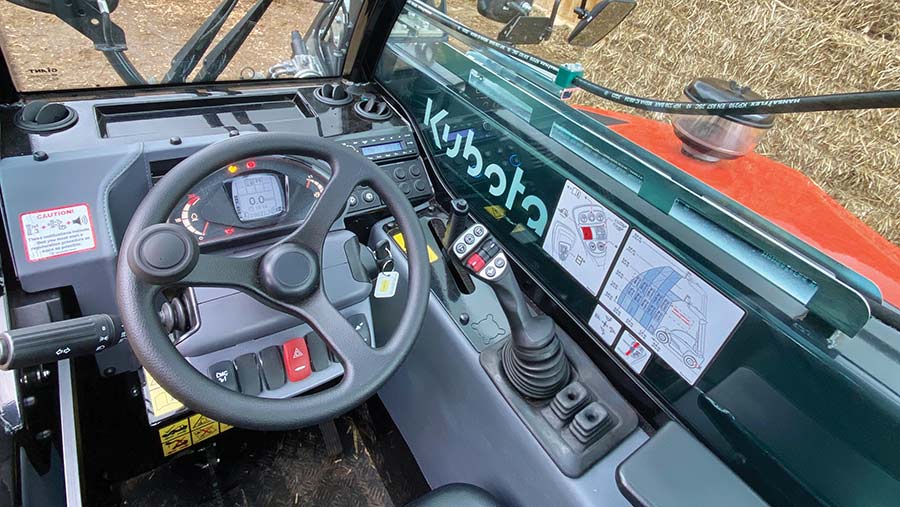First impressions: Kubota’s diddy debut KTH telehandler
 © MAG/Oliver Mark
© MAG/Oliver Mark Twelve years on from its multimillion-pound acquisition of Kverneland that yielded new mower, baler and fertiliser spreader ranges, Kubota has now nosed in on the world of materials handling – albeit in a far smaller way.
The pithily named KTH (Kubota Tele Handler, obviously) marks the firm’s first foray into this sector, thanks to a tie-up with Dutch manufacturer Tobroco-Giant.
See also: Lightweight JCB 403 proves a hit for Pembrokeshire farm
Kubota KTH 4815-2
- Engine 1.8-litre, three-cylinder Kubota
- Power 50hp
- Transmission Two-range hydrostatic
- Top speed 25kph
- Max lift height 4.73m
- Max lift capacity 1,420kg
- Boom hydraulics 51 litres/min
- Turning circle 2.7m
- Weight 2,950kg standard; 3,120kg Hi Spec Deluxe
- List price Low Weight £53,378, Deluxe £65,623
- Approx on-farm price Lightweight £40,000, Deluxe £49,000
The sole model, the 4815-2, will be campaigning in the lowest reaches of the four-wheel-steer market, with its pint-sized proportions – sub-2m high and wide – making it well-suited to lighter-duty stockwork.
Kubota will hope it can replicate the success of JCB’s equally small 403 pivot-steer, which has proved a popular alternative to a tractor loader and good foil for a big handler when it comes to mucking out pokey sheds and bedding down cubicles.
And with a near-1.5t lift capacity, 4.73m reach and teeny 2.7m turning circle, it should be able to turn its hand to plenty of other tasks, too.

© MAG/Oliver Mark
Giant underneath
Peel off that tangerine skin and, bar a few spec variations, you’ll find a machine largely identical to Giant’s GT5048.
The Dutch firm has found good business in building mini handlers for big-name brands, having also penned deals to produce compact pivot-steer loaders for Doosan, parent company of Bobcat, in Europe, and for CNH Industrial in the US.
This is its “second-generation” model; the first was also available in Kubota livery, but limited production capacity meant it never made it out of mainland Europe.
There’s next to no difference between this version and the last, aside from a few engine-related alterations to meet the latest Stage 5 emissions regulations.
It’s here that Kubota has had some involvement, with the provision of its three-cylinder, 1.8-litre block.
This produces 50hp and keeps the smut police at bay with a diesel oxidation catalyst and particulate filter (DPF), saving the need for any AdBlue-related faff.
Minor improvements include a longer DPF service interval – now 6,000 hours – and some tuning tweaks that allow the filter regeneration process to occur at lower revs.
Tobroco-Giant hasn’t shirked on component suppliers, with Bosch Rexroth providing the hydraulic pump and hydrostatic drive motor, and Carraro axles employed front and back.
The drive is transmitted via mechanical driveshafts, with operators getting two hydrostatic speed ranges to play with – 0-7kph for delicate stuff, and 0-25kph for faster yard and road work.
All models are four-wheel drive as standard, and the fanciest version also gets a switchable front axle diff lock and the full package of two-, four- and crab-steer modes.
Unless you go peasant-spec with the budget “Low Weight” derivative then you’ll also get a set of Mitas SK-02 skid-steer tyres (31×15.5-15s).
Lifting and shifting
Initially, UK-bound machines will be fitted with the Euro attachment carriage used on most tractor loaders. However, Kubota says it will look at offering alternatives ones it has ascertained demand.
The Rexroth pump delivers up to 51 litres/min for boom movements, which are carried out via a run-of-the-mill joystick in the cab.

Top-spec models get twin auxiliaries © MAG/Oliver Mark
Features include hydraulic attachment locking as standard, adjustable flow rates and, on the top-speccer, proportional control of two auxiliary connections for a bucket brush or grab.
There’s a lock-out function to prevent major breaches of the near-1.5t lift limit, determined by a load-sensing strain gauge that measures stresses on the rear axle casting.
This can be overridden for eight seconds to allow the operator to reposition the load by moving the headstock in/out or up/down via a button to the left of the steering wheel.
Cabin
There are four specs in all, which effectively determine the comfort in which the operator resides.
The most austere of these is “Low Weight”, which is stripped to the bare necessities – no door, no lights and, crucially, no rear counterweight.
Doing without this 170kg block keeps total weight to about 2.7t, meaning it can be legally towed on a flatbed behind a 4×4.
Opting for the “Canopy” version adds both the counterweight and the skid-steer tyres, which will likely be a welcome upgrade over the narrow 10/75×15.3s on the base model.

Fully enclosed cab with joystick controls © MAG/Oliver Mark
However, it still leaves the machine doorless, with only three-quarter glazing (front, side and rear windows).
“Standard Cab” adds more appeal, with LED road lights and a fully enclosed cockpit that features a single-piece door with a swing-open top-half window.
These also get a radio and heater, which fires a warming blast through four vents – three on the dash and one lower down to keep the chilblains at bay.
Buyers looking for maximum comfort will be pointed towards the “Hi Spec Deluxe”, which comes with air-conditioning, an air seat and a full LED light kit.
As mentioned earlier, this model also has twin proportional auxiliaries, all three steering modes, a diff-lock and a reversing fan.
Visibility is pretty good, with a looping front windscreen that curves over the driver’s head, complete with a pair of wipers and tinting to provide baldies with a degree of protection from searing summer sun.
Handy features include a drop-down beacon that keeps it level with the roofline when ceiling space is at a premium, range and reach adjustment of the steering column and a rear work light that automatically turns on when reverse is selected.
How much?
List prices range from £53,378 for the basic “lightweight” model to £65,623 for the “deluxe”. That’ll likely translate to £40,000-£49,000 on-farm. Dealer deliveries are expected to start imminently.

